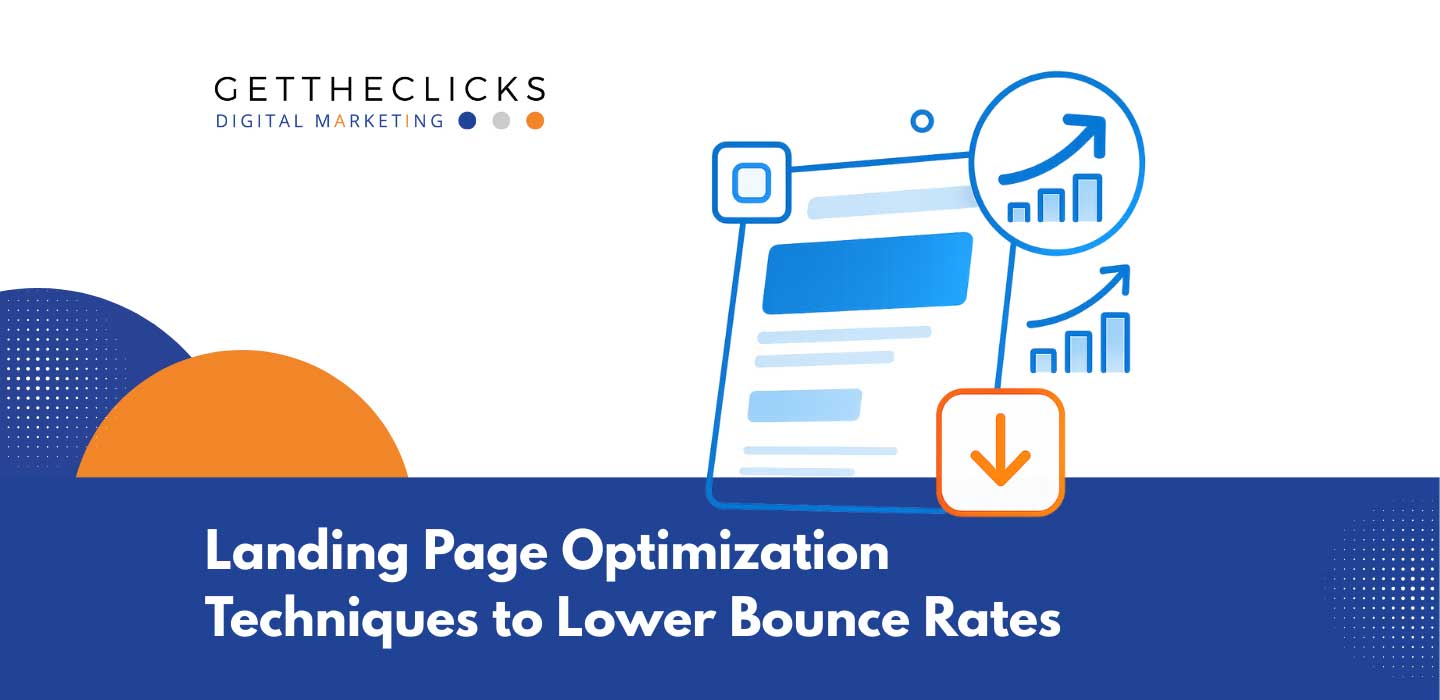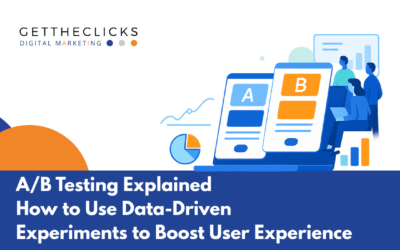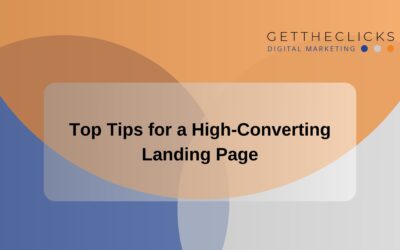When users land on your page and leave without interacting, it’s more than a lost visitor—it’s a missed opportunity. High bounce rates can signal poor user behavior, mismatched intent, or design flaws. Reducing them means capturing more value from your traffic. This guide dives into specific, actionable techniques to help lower bounce rates and increase user engagement.
From conversion-optimized landing page design and brand messaging to testing and personalization, each tactic plays a role in holding attention and encouraging desired action. Let’s explore how to make your landing pages more effective at keeping landing page visitors engaged.
What Bounce Rate Really Means and Why It Matters
Bounce rate refers to the percentage of users who land on your page and leave without any interaction. It differs from exit rate, which tracks the final web page in a session, and from engagement metrics that reflect deeper activity.
Importantly, not all high bounce rates are problematic if a user finds what they need instantly; a bounce isn’t necessarily negative.
Still, context matters.
A bounce rate of 30–55% is healthy for lead capture pages, while blogs often hover between 60–80%. Search engines don’t directly penalize bounce rate, but poor engagement can influence rankings indirectly.
To improve, you must first identify causes, whether it’s slow load time, irrelevant content, or confusing layouts.
UX Design Factors That Directly Impact Bounce Rates
A landing page’s design can either encourage users to stay or push them to leave within seconds. Good UX isn’t optional; it directly influences how quickly and easily users interact with your landing page.
Slow Load Times: Pages that take too long to load cause immediate drop-offs, especially on mobile devices. Speed is often the first impression, and delays can kill engagement before it begins.
Visual Clutter: Overcrowded designs overwhelm users and distract from the main call to action. A clean, focused layout helps visitors quickly process key information.
Poor Layout Hierarchy: If users can’t tell what’s important at a glance, they’ll lose interest fast. Strong visual hierarchy guides the eye and prioritizes critical actions.
Confusing Navigation: When menus are hidden, unclear, or overcomplicated, users give up. Simple, intuitive navigation keeps users moving deeper into the site.
Lack of Mobile Optimization: Pages that don’t adapt well to smaller screens create friction and frustration. Mobile optimization and responsive design are essential to keeping on-the-go users engaged.
Reducing Cognitive Load to Keep Visitors Engaged
Cognitive overload causes users to leave. When there’s too much text, too many visuals, or too many choices, visitors shut down. Simplifying your content and interface helps users process information more easily.
Use progressive disclosure to reveal information gradually rather than all at once. Focus the messaging on one core action and strip away distractions. Among the top tips for a high-converting landing page is ensuring it informs, persuades, and converts without overwhelming. When users don’t have to think too hard, they’re more likely to stay, explore, and transform.
How to Optimize Above-the-Fold Content for Engagement
Above-the-fold content is where first impressions form. Your compelling headlines must match the user’s intent and deliver immediate value. Follow it with a concise subheadline that builds on the promise.
Engaging visuals above the fold should reinforce your message, not distract. Use high-quality images or videos to support the value proposition. Place the call to action prominently and ensure it’s clearly actionable.
Aligning Landing Page Content With User Intent
Landing pages must align with the intent behind the click. If a user comes from a ppc ad, show value immediately. If they arrive from a blog or social post, consider offering more context before pitching.
Tailor content for different traffic sources. Adjust messaging and layout based on whether users are ready to convert or just exploring. CTAs should reflect that intent. Push aggressively for converting visitors with hot leads, or guide colder traffic toward learning more. Misalignment leads to exits; relevance encourages action.
Testing Methods That Reveal Real Bounce Issues
Basic A/B testing provides limited insights into why users bounce. To uncover the real issues, you need tools that reveal behavior and guide smarter decisions.
Use Heatmaps and Scroll Tracking: Heatmaps show where users click, pause, or ignore content, while scroll maps highlight how far they go before leaving. These visuals help identify friction points that Google Analytics alone can’t capture.
Leverage Session Recordings: Watching real user sessions reveals user behavior patterns like hesitation, rage clicks, or missed CTAs. It’s a direct way to spot UX problems in action.
Run Micro-Tests on Key Elements: Test different landing page elements like form fields, CTA copy, button color, or image placement individually. Small changes often yield meaningful differences in bounce rate and user engagement.
Isolate One Variable at a Time: Changing multiple elements at once clouds your results. Testing in isolation gives you clear data on what works and what doesn’t.
Use Behavioral Data Over Assumptions: Avoid guessing what users want—let their actions inform your updates. Optimizing landing pages using real, valuable data leads to smarter, lasting improvements.
Trust-Building Elements That Encourage Visitors to Stay
Trust is a deciding factor in whether users stay or leave. One of the top ways to lower bounce rate is to establish credibility from the first moment. Add recognizable badges, SSL certifications, payment security icons, or well-known partnerships. These cues reduce perceived risk.
Include customer testimonials or snippets of reviews from real customers. Showcase recognizable clients or case study results if applicable. Add clear privacy statements, especially near forms; transparency builds comfort. When users feel secure and confident, they’re more likely to engage and less likely to bounce.
CTA Optimization Strategies That Prevent Bounces
Your CTA must be compelling, specific, and easy to act on. Generic phrases like “Submit” don’t inspire clicks. Use action-oriented language tied to benefits, like “Start My Free Trial” or “Get Instant Access.”
Placement should feel natural, above the fold, after key content, and again at logical scroll points. Avoid overloading the page with buttons. Support CTAs with bullet points or microcopy that ease concerns, such as “no credit card required,” which can boost engagement. The right landing page builder strategy keeps users moving forward instead of bouncing away.
Using Personalization to Decrease Bounce Rates
Personalization makes users feel understood. Use dynamic content that adapts based on device type, location, or referral source. Mobile-friendly users might see a simpler layout and quicker CTAs; repeat visitors might see tailored offers or reminders.
Segment your messaging by behavior or source. Show social proof to first-timers and new features to returners. When your page reflects the user’s needs in real-time, the landing page bounce rate naturally declines because the experience feels relevant and responsive.
How to Measure and Validate Landing Page Improvements
Reducing bounce rate is only part of the equation; you need to validate that your changes actually improve landing page performance. Track broader engagement metrics to get the full picture.
Look Beyond Bounce Rate: A lower bounce rate is a good signal, but not the final goal. Monitor session duration, scroll depth, and conversion rates to assess real impact.
Segment by Traffic Source: Different sources behave differently; what works for organic visitors might underperform for paid ad campaigns. Always break down landing page optimization performance by channel.
Analyze by User Segment: New and returning users often engage in distinct ways. Segmenting helps you tailor changes and understand behavior in context.
Differentiate Surface Fixes from Structural Fixes: Speed and design tweaks are surface-level; page optimization, messaging, and CTA clarity are deeper. You need both, but only structural changes move the conversion rate optimization needle significantly.
Correlate Bounce Drops with Conversion Gains: A lower landing page bounce rate without more conversions may indicate lingering issues. Re-examine your offer and messaging if engagement rises but results don’t.
Start Converting with Get the Clicks
Ready to turn your traffic into action? At Get the Clicks, we specialize in optimizing landing pages that keep visitors engaged and drive real results. Contact us and let’s lower your bounce rates and boost your conversions—starting today.





